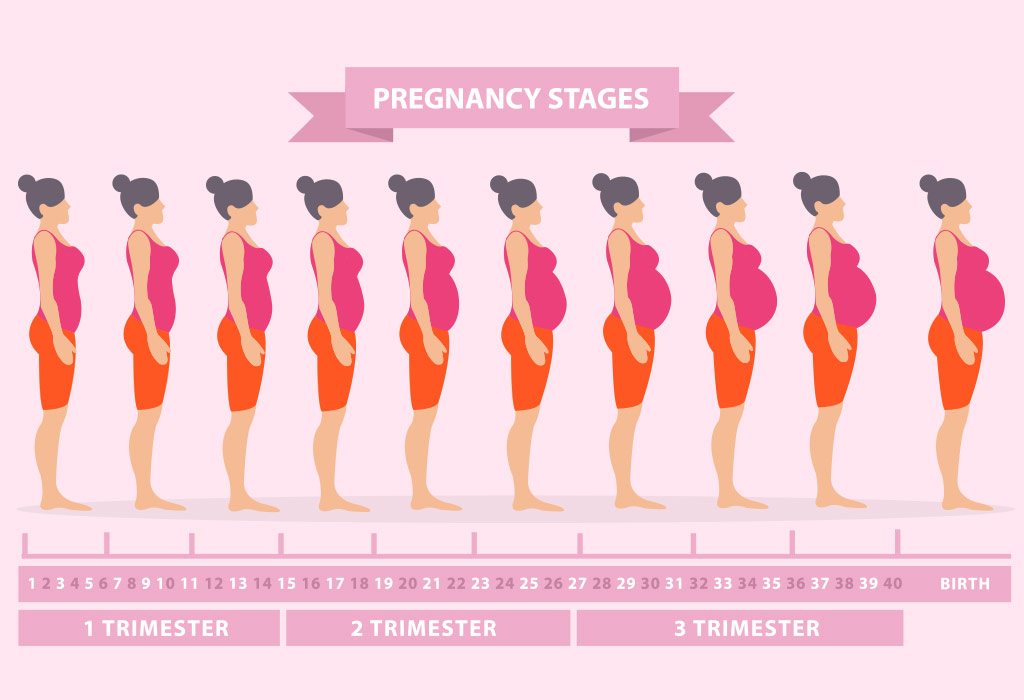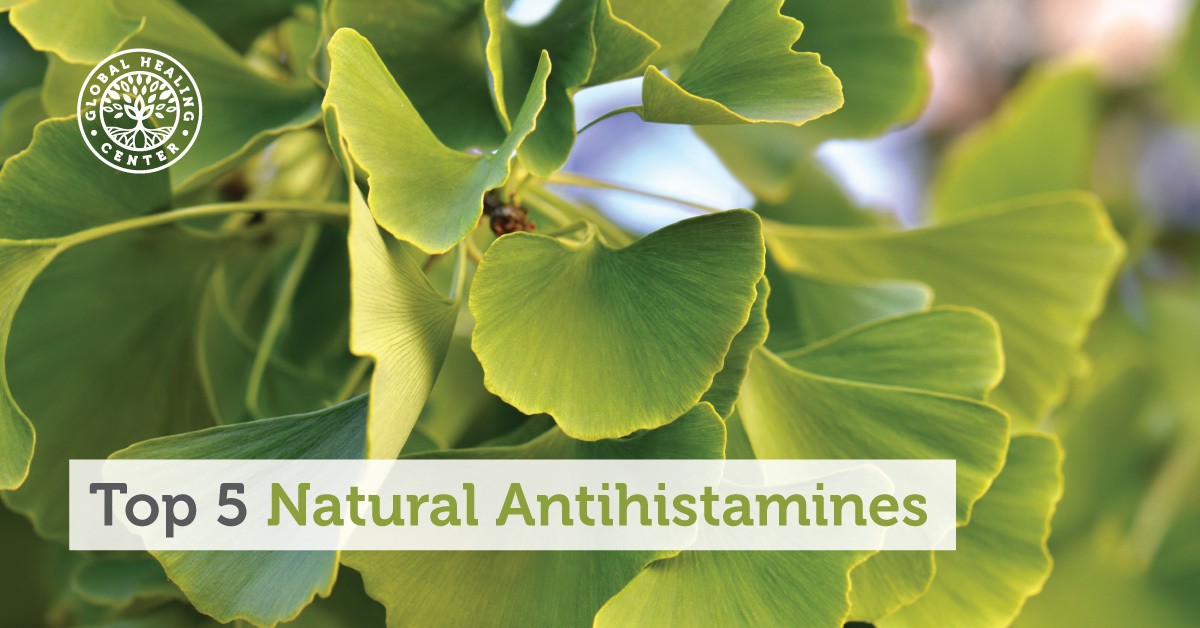Diabetes: Nuts could reduce cardiovascular risk
New evidence supports the current recommendation for people with type 2 diabetes to eat nuts to prevent cardiovascular issues and premature death.
People with diabetes may benefit from eating nuts.
Nuts are packed full of essential nutrients that could benefit overall health.
They contain high levels of unsaturated fatty acids, fiber, vitamin E, folate, and minerals, including potassium, calcium, and magnesium.
The latest research has shown that nut consumption may help reduce the risk of chronic disease.
A recent study, which featured in the Journal of the American College of Cardiology, identified an association between eating nuts and a lower risk of cardiovascular disease.
Type 2 diabetes and nut consumption
Type 2 diabetes is a chronic condition that affects the way in which the body metabolizes glucose, which is its primary source of fuel. Possible complications include kidney damage and cardiovascular disease.
According to the American Diabetes Association, in 2015, more than 30 million people in the United States had diabetes.
In the same year, diabetes was the seventh leading cause of death in the U.S., with over 250,000 death certificates listing it as an underlying or contributing cause of death.
Every year, doctors diagnose 1.5 million cases of diabetes in the U.S.
Over the years, several studies have linked nut consumption to the prevention of coronary heart disease. In 2010, researchers noted that the results of these studies justified exploring the use of nuts in managing the symptoms and complications of diabetes.
A new study, which the American Heart Association journal Circulation Research has published, found additional evidence that supports the recommendation of incorporating nuts into a balanced diet to reduce the risk of heart disease in people with diabetes.
Boosting nut intake
In this latest study, researchers used self-reported diet questionnaires about nut consumption. Close to 16,000 adults participated, and they filled out the questionnaires before and after they received a diagnosis of type 2 diabetes.
The researchers found that all types of nut offered health benefits, especially tree nuts.
As the name suggests, tree nuts, which include almonds and walnuts, grow on trees, while groundnuts, such as peanuts, grow underground. Tree nuts may offer more benefits because they contain higher amounts of nutrients in comparison with groundnuts.
Their analysis showed that people with type 2 diabetes who ate five servings of nuts per week had a 17-percent reduced risk of cardiovascular disease and a 34-percent lower risk of death relating to this condition.
Those who consumed more nuts after their diabetes diagnosis had an 11-percent lower risk of cardiovascular disease and a 25-percent reduced risk of death related to heart disease compared with people who did not increase their intake of nuts.
“Our findings provide new evidence that supports the recommendation of including nuts in [healthful] dietary patterns for the prevention of cardiovascular disease complications and premature deaths among individuals with diabetes.
Even small increases might help
The team of researchers found that eating even a small number of nuts made a significant difference. Each additional serving per week of nuts led to a 3-percent reduction in the risk of cardiovascular disease and a 6-percent lower risk of death due to heart disease.
Although the specific effects of nuts on heart health are not clear, findings suggest that the nutrients in nuts may improve blood pressure, blood sugar control, and inflammation as well as enhancing the metabolism of fats and promoting blood vessel wall function.
“Cardiovascular disease is the leading cause of death and a major cause of heart attacks, strokes, and disability for people living with type 2 diabetes.
Efforts to understand the link between the two conditions are important to prevent cardiovascular complications of type 2 diabetes and help people make informed choices about their health.

Pregnancy Trimesters
The typical pregnancy has three trimesters and lasts around 40 weeks from the first day of a woman’s last period. In each trimester, the fetus will meet specific developmental milestones.
While 40 weeks is the usual time frame, a full-term baby can be born as early as 37 weeks and as late as 42 weeks.
Read on for more information about what to expect during each pregnancy trimester.
The first trimester
The first trimester lasts for the first 12 weeks of the pregnancy and is crucial for the baby’s development. At conception, the egg and sperm combine to form a zygote, which will implant in the uterine wall.
The zygote becomes an embryo as the cells divide and grow. All of the major organs and structures begin to form.
At 4–5 weeks, the embryo is only 0.04 inches long but will grow to around 3 inches long by the end of the first trimester. The embryo is now looking a lot more like a human baby.
The fetus’s heart will start beating by the eighth week. The eyelids remain closed to protect its eyes. The fetus can also make a fist at this stage. Also, external genitalia will have formed and may be visible during an ultrasound, meaning that a doctor can tell someone whether the fetus is male or female.
A woman will experience many changes during the first trimester, too. Many women will start to feel morning sickness, or nausea and vomiting due to pregnancy, at 6–8 weeks.
Despite its name, this nausea does not just occur in the morning. Some pregnant women get sick at night, while others are sick all day.
A pregnant woman might also feel very tired and notice that she is more emotional than usual due to hormonal changes.
Many also report experiencing food cravings or aversions during early pregnancy, alongside a stronger sense of smell. Breast tenderness is also very common.
The second trimester
The second trimester lasts between week 13 and 26 of pregnancy. The fetus will go through a lot of changes during this time and grow from approximately 4–5 inches long to around 12 inches long.
During the second trimester, the fetus will also go from weighing about 3 ounces to weighing 1 pound (lb) or more.
In addition to the major structures and organs, other important parts of the body will also form during the second trimester, including:
- the skeleton
- muscle tissue
- skin
- eyebrows
- eyelashes
- fingernails and toenails
- blood cells
- taste buds
- footprints and fingerprints
- hair
If the fetus is male, the testes begin to drop into the scrotum. If the fetus is female, the ovaries begin to form eggs.
The fetus now has regular sleeping and waking patterns. They can also hear sounds from outside the womb, and they will begin to practice swallowing, which is an important skill after delivery.
The woman will also likely begin to feel better. In most cases, morning sickness and fatigue start to go away at the beginning of the second trimester. Food cravings and aversions can continue, however.
A woman may notice that her belly is starting to grow and that she is beginning to “look pregnant.” She should also start to feel the baby moving, which is called “quickening.”
Braxton–Hicks contractions may start toward the end of the second trimester.
A woman may also begin to experience other symptoms in the second trimester, including:
- round ligament pain
- nipple changes, such as darkening
- stretch marks
The third trimester
During the third trimester, a growing fetus will move more regularly.
The third trimester lasts from week 27 until delivery, which is usually around week 40. During this trimester, a developing baby will grow from around 12 inches long and 1.5 lbs in weight to about 18–20 inches long and 7–8 lbs in weight.
Most of the organs and body systems have formed by now, but they will continue to grow and mature during the third trimester.
The fetus’s lungs are not fully formed at the beginning of this trimester, but they will be by the time of delivery.
A growing baby will start practicing breathing motions to help prepare for life after birth. Kicks and rolls become stronger, and a pregnant woman should feel the baby move regularly.
A pregnant woman may also begin to feel uncomfortable during this trimester, as her belly starts to grow. Most women start to feel Braxton–Hicks contractions getting stronger, and they may have back pain from carrying a heavy belly.
Other symptoms that a pregnant woman may experience during the third trimester include:
- heartburn
- swollen feet
- insomnia
- mood swings
- leakage of milk from the breasts
- other breast and nipple changes
- frequent urination
As the woman gets closer to the delivery, the baby should turn in to a head-down position to make birth easier.
Anxiety about delivery and parenthood are also common toward the end of pregnancy.
Postpartum, or the ‘fourth trimester’
Many people unofficially call the baby’s first 3 months of life the fourth trimester, or the time when the baby adjusts to life outside the womb.
Human babies are born very immature compared with most other mammals. Many baby mammals can stand up and walk within hours of birth.
Human babies have large brains, so they must be born at 9 months’ gestation. If the birth occurred any later, it would be very dangerous because their heads might not be able to pass through a woman’s pelvis safely.
Since they are still very immature, newborn babies need constant care during their first few months of life.
This period can be very difficult for both the baby and their caregiver. Keeping the baby calm means replicating life in the womb as closely as possible. This can be accomplished by:
- holding the baby close
- gently swaying or rocking the baby
- making swishing or shushing noises
- swaddling
- giving the baby opportunities to suck, either during breastfeeding or by using a pacifier
The fourth trimester can be challenging for new parents. It is vital to rest as much as possible.
To make this time a little easier, try to accept help from family and friends. This help may be in the form of meals, babysitting older siblings, and cleaning or laundry as needed.
A woman will experience lochia, or bleeding and vaginal discharge, that continues for 4–6 weeks after birth. Her breasts may be sore and leak as she adjusts to breastfeeding.
Many women experience mood swings, or “baby blues,” after birth. This is usually due to the fluctuation in hormones.
Some women may experience postpartum depression after childbirth. This includes feelings of intense sadness, fatigue, anxiety, and hopelessness that can affect her ability to care for herself and the baby.
Postpartum depression is treatable, so anyone experiencing these symptoms should speak to a doctor as soon as possible.
Summary
Pregnancy, childbirth, and the first few months with a newborn are unlike any other time in life. They are full of new experiences, great uncertainty, and many new emotions.
Getting regular prenatal care is vital during each trimester. A doctor can help ensure the growing baby is meeting their developmental milestones, and that the woman is in good health.
Type 2 diabetes: How do fructose-sweetened drinks affect risk?
A new study shows that sugary drinks that contain fructose raise the risk of type 2 diabetes more than other fructose-containing foods.
New research finds that ‘nutrient-poor’ sweetened drinks have a harmful effect on metabolic health when they add excess energy.
A range of recent studies has pointed out the potential health risks of sugary drinks. Studies have confirmed that there is a link between sugary drinks and obesity, as well as cautioning that as few as two sugary drinks per week may raise the risk of type 2 diabetes considerably.
Now, a comprehensive review of existing research confirms that fructose-containing drinks can increase the risk of type 2 diabetes more than other foods that contain fructose.
Although some research has suggested that fructose might be a good alternative to sugar, especially for people who are already living with diabetes, more recent studies have pointed out that “fructose could be particularly detrimental to metabolic health, and even more so than other sugars.”
As the researchers explain, fructose is a natural ingredient in several foods, such as fruits, natural fruit juice, honey, and even some vegetables. However, some food manufacturers artificially add the compound to soft drinks, desserts, cereals, and other baked foods.
Foods with fructose and metabolic health
To find out, the researchers analyzed the conclusions of 155 studies that looked at how different food sources affected peoples’ blood sugar levels. The researchers followed the participants, some of whom had diabetes, for up to 3 months.
During this time, the researchers also assessed the participants’ glycated hemoglobin — that is the amount of sugar that is attached to red blood cells — as well as their glucose and insulin levels after a period of fasting.
Researchers divided the 155 controlled intervention studies into four groups based on their design.
- Substitution studies compared the energy derived from sugars with that from other carbohydrates.
- Subtraction studies removed sugar-derived energy from the participants’ diet and compared it with a regular diet.
- Addition studies added glucose-derived energy to the diet and compared it with a non-sugar-enhanced diet.
- Ad libitum studies replaced the energy from sugars with other nutrients that the participants were free to consume at will.
The reviewers assessed the bias and the level of certainty of these studies.
Sweetened drinks vs. other sugary foods
Overall, the review found that most of the fructose-containing sugary foods do not harm blood sugar levels when they do not add excess calories. Some of the studies, however, found a harmful effect on fasting insulin levels.
In fact, fruit and fruit juice, which are high in fructose, may even benefit the blood sugar and insulin levels of those with diabetes, when these foods do not add excess calories, the review suggests.
However, some “nutrient-poor” foods that add excessive energy to the diet, such as sweetened drinks and fruit juice, have a harmful metabolic effect.
The researchers hypothesize that the higher content of fiber in fruit, for example, may partly explain this difference, because they slow down the release of glucose. Also, fructose has a lower glycemic index than other carbohydrates.
“These findings might help guide recommendations on important food sources of fructose in the prevention and management of diabetes,” says the study’s lead author.
“But the level of evidence is low,” he cautions, “and more high-quality studies are needed.”
Until more information is available, public health professionals should be aware that harmful effects of fructose sugars on blood glucose seem to be mediated by energy and food source.
Why a low-carb diet can help you lose weight and keep it off
“The largest and longest feeding study to test the ‘carbohydrate-insulin model, concludes that a lower carb intake burns more calories, which may help people maintain weight loss over a longer period of time.
Eating a high-quality, low-carb diet may help us stave off weight gain for longer.
when we lose weight, the body adapts by lowering its energy expenditure. In other words, it burns fewer calories.
This way, the metabolism protects itself against long-term weight changes.
However, when the weight loss is intentional, this adaptive response can be frustrating for dieters, as it leads to weight regain.
Although weight gain after dieting is a well-known phenomenon, researchers do not know much about how different diets affect the way the metabolism responds to them.
The so-called carbohydrate-insulin model, however, suggests one such mechanism. It posits that highly processed foods high in sugar drive hormonal changes that increase the appetite and lead to weight gain.
“According to this model, the processed carbohydrates that flooded our diets during the low-fat era have raised insulin levels, driving fat cells to store excessive calories. With fewer calories available to the rest of the body, hunger increases and metabolism slows — a recipe for weight gain.”
In this context, we decided to investigate the effects that different diets had on the metabolism. Specifically, we looked at the carb-to-fat ratio in varying diets over a 20-week period.
Studying carb intake, weight, and calories
The researchers examined the effect of different diets on 234 adults aged 18–65 whose body mass index (BMI) was at least 25. As part of the study, the participants had also adhered to a weight loss plan for 10 weeks.
By the end of the trial, 164 participants had achieved their weight loss goal of around 12 percent of their total weight. Then, they adhered to either a high-, moderate-, or low-carb diet for 20 weeks, allowing the researchers to examine if they managed to maintain the weight loss.
The high-carb diet was composed of 60 percent high-quality carbs, the moderate-carb one had 40 percent carbs, and the low-carb diet had 20 percent carbs. The diets also minimized sugar intake and used whole grains.
During this time, the scientists measured the participants’ weight and tracked the number of calories they burned. They also examined the participants’ insulin secretion and metabolic hormones.
‘A 20-pound weight loss after 3 years’
At the end of the study period, people in the low-carb group burned significantly more calories than those who had been on a high-carb diet.
Specifically, participants who were on a low-carb diet burned around 250 kilocalories more per day than those who were on a high-carb diet.
“If this difference persists — and we saw no drop-off during the 20 weeks of our study — the effect would translate into about a 20-pound weight loss after 3 years, with no change in calorie intake.”
The results also indicated that for participants who had the highest insulin secretion, the impact of a low-carb diet was even more significant: low-carb dieters burned 400 calories more per day than high-carb dieters.
“A low glycemic load, high-fat diet,” explain the authors, “might facilitate weight loss maintenance beyond the conventional focus on restricting energy intake and encouraging physical activity.”
“Our observations challenge the belief that all calories are the same to the body.”
“This is the largest and longest feeding study to test the ‘carbohydrate-insulin model,’ which provides a new way to think about and treat obesity.”

5 Natural antihistamines for allergies
People with allergies may find relief by using natural plant extracts and foods that act as antihistamines.
Antihistamines are substances that block histamine activity in the body. Histamine is a protein that triggers allergy symptoms, such as sneezing, itchy eyes, and a scratchy throat.
Over-the-counter and prescription antihistamine medications are effective for symptom relief, but they can cause side effects, such as drowsiness and nausea. As a result, some people wish to try natural alternatives.
In this article, we describe the five best natural antihistamines, and we take a look at the science behind them.
1. Vitamin C
There are a number of natural antihistamines that may help relieve allergy symptoms.
Vitamin C boosts the immune system. It also acts as a natural antihistamine.
According to a 2018 study on vitamin C in the treatment of allergies, oxidative stress plays a key role in allergic diseases. As vitamin C is a powerful antioxidant and anti-inflammatory, it may act as a treatment for allergies.
The researchers observed that high doses of intravenous vitamin C reduced allergy symptoms. They also reported that a deficiency in vitamin C might lead to allergy-related diseases.
Another study from 2000 suggests taking 2 grams (g) of vitamin C daily to act as an antihistamine.
The vitamin is present in many fruits and vegetables, including:
- bell peppers
- broccoli
- cantaloupe melon
- cauliflower
- citrus fruits
- kiwifruit
- strawberries
- tomatoes and tomato juice
- winter squash
2. Butterbur
Butterbur is a plant extract from a shrub that grows in Asia, Europe, and some parts of North America. People often use butterbur to treat migraines and hay fever, also known as allergic rhinitis.
According to the National Center for Complementary and Integrative Health (NCCIH), butterbur may have antihistamine effects.
A 2007 review of 16 randomized controlled trials, testing 10 herbal products, suggests that butterbur could be an effective herbal treatment for hay fever.
This review suggested that butterbur was better than a placebo, or as effective as antihistamine medications, for relieving allergy symptoms.
However, the authors of the review point out that some large studies received funding from industry manufacturers, and so further independent research is needed.
Most people tolerate butterbur well, but it may cause side effects such as:
- breathing difficulties
- diarrhea
- drowsiness
- fatigue
- a headache
- itchy eyes
Raw butterbur extracts contain certain compounds called alkaloids that can cause liver damage and cancer. Extracts of butterbur that do not contain these substances are available. However, no studies have looked into the long-term effects of using these products.
The plant extract can also cause allergic reactions in people with sensitivities to ragweed, chrysanthemums, marigolds, and daisies.
3. Bromelain
Pineapple juice contains the anti-inflammatory enzyme bromelain.
Bromelain is an enzyme found in the core and juice of pineapples and is also available as a supplement.
Bromelain is a popular natural remedy for swelling or inflammation, especially of the sinuses and following injury or surgery.
Research on mice suggests that bromelain can reduce allergic sensitization and allergic airway disease thanks to its anti-inflammatory and anti-allergic properties.
In some people, oral supplementation of bromelain may cause adverse reactions such as:
- changes in menstruation
- digestive upset
- an increased heart rate
People who are allergic to pineapple should avoid bromelain.
4. Probiotics
Probiotics are microorganisms that might offer health benefits by helping the body maintain a healthful balance of gut bacteria.
Probiotics may boost a person’s immune system, which can help the body fight off allergies.
The NCCIH say that the evidence for probiotics is mixed and that some probiotics may help while others may not.
5. Quercetin
Quercetin is an antioxidant flavonoid found in many plants and foods. Research suggests that adding quercetin to the diet may help to relieve allergy symptoms.
Research reports that quercetin can have anti-allergic and antihistamine properties.
In one animal study, researchers found that quercetin could reduce the respiratory effects of allergies in mice by lowering airway inflammation.
However, the evidence for its effectiveness is mixed, and according to the NCCIH, there is not enough evidence to suggest that quercetin can relieve allergic rhinitis.
Quercetin is naturally present in many foods and herbs, including:
- apples
- berries
- black tea
- broccoli
- buckwheat tea
- grapes
- Ginkgo biloba
- green tea
- peppers
- red onions
- red wine
However, taking supplements of quercetin will work better in the treatment of allergies than eating foods that contain it. This is because foods contain significantly lower levels of the flavonoid.
Quercetin is generally safe for most people. It may cause headaches and tingling in the arms and legs of some people. Very high doses, especially when taken long-term, may cause kidney damage.
Other natural remedies
The NCCIH state that there is not enough evidence to suggest that the following natural products can help with the symptoms of allergic rhinitis:
- astragalus
- grape seed extract
- omega-3 fatty acids
- stinging nettle
- Pycnogenol
- spirulina
Alternative allergy treatments
If natural antihistamines do not reduce a person’s allergy symptoms, they may need to seek alternatives.
Other methods to treat and prevent allergy symptoms include:
Avoiding the allergen
Allergy avoidance is typically the first line of defense against symptoms. Try to identify the allergen, which might be pollen, pet dander, or mold spores, and reduce exposure to it as much as possible.
Medications
Allergy shots may be helpful for people with severe allergies.
Allergy medicines can cause the immune system’s reaction to the allergen to calm down. Antihistamines work by breaking down histamine in the body.
Antihistamine medications can reduce symptoms such as sneezing, itchy eyes, and sinus pressure.
Medications for allergies are available OTC or by prescription and include:
- oral medications
- liquids
- nasal sprays
- eye drops
Immunotherapy
People with severe allergies may benefit from immunotherapy. This treatment is also suitable if allergy medications do not relieve symptoms.
During immunotherapy, a healthcare professional will give a person a series of injections that contain tiny amounts of the allergen. This treatment may take place over several years and aims to desensitize the body to the allergen.
For people with pollen allergies, doctors may recommend sublingual immunotherapy. This involves placing a tablet under the tongue until it dissolves.
Epinephrine treatment
Those with severe allergies may need to carry an emergency epinephrine shot (Auvi-Q, EpiPen) with them at all times. Giving this treatment at the onset of an allergic reaction can reduce symptoms and may save a person’s life.
Takeaway
Living with allergies can be challenging, especially when symptoms are at their worst. Seek help and advice from a doctor when dealing with allergy symptoms.
Some natural substances can have antihistamine properties, meaning they can break down the chemicals that cause allergy symptoms. More evidence is needed to find out how effective these natural remedies are.
For the best chance of relief, try to limit or avoid exposure to the allergen. Practice good self-care techniques and consider using natural antihistamines.
As the United States Food and Drug Administration (FDA) do not regulate supplements, and natural remedies can interfere with certain medications, it is essential to speak to a doctor before beginning any new supplement or herbal remedy.
chicken allergies
People with a chicken allergy may have an allergic reaction after eating chicken meat, or, sometimes, after their skin comes into contact with chicken feathers.
While fish and seafood are often the primary sources of food allergies, allergies to other types of meat are less common.
Most people with an allergy to chicken will notice mild symptoms and discomfort after eating or touching it. However, some people may develop severe reactions that require medical attention.
Chicken allergies and intolerances
People can have an allergy or intolerance to chicken meat or other chicken products, including feathers or eggs.
An allergy usually involves more generalized symptoms, such as swelling and rashes, while an intolerance involves digestive issues, such as diarrhea.
Another uncommon condition, known as bird-egg syndrome, occurs when a person eats undercooked or raw egg yolks or inhales feathers or particles from a chicken.
Are chicken allergies common?
Allergic reactions to chicken meat are rare. They can affect both adults and children. They are most often seen in adolescents, though may begin around preschool age.An allergy to chicken meat may occur as a primary allergy (a true allergy), or as a secondary allergy caused by cross-reactivity with another allergy, such as an allergy to eggs, though this is rare.
Symptoms of a chicken allergy
A chicken allergy can cause symptoms that range in severity. Since it is a rare condition, it is difficult to say what the most common reactions are.
However, people with chicken meat allergies or intolerance may experience the following symptoms after eating or coming into contact with chicken meat:
- coughing or wheezing
- red, irritated skin
- hives
- an inflamed or swollen throat
- swollen tongue or lips
- sneezing
- nausea or vomiting
- stomach cramps
- diarrhea
- a sore throat
- swollen, watery eyes
In more severe cases, people may experience a dangerous allergic reaction known as anaphylaxis. Symptoms of anaphylaxis include:
- trouble breathing
- heart palpitations
- a racing heart
- drop in blood pressure
- loss of consciousness
- wheezing
If a person experiences any of the above symptoms after eating cooked chicken or handling raw chicken, they should get medical attention immediately as anaphylaxis is a life-threatening condition.
Can you be allergic to chicken but not eggs?
If a person has a primary allergy to chicken meat, it does not mean they will have an allergy to chicken eggs. In other cases, people may develop a secondary sensitivity to chicken meat as a result of other allergies, such as in bird-egg syndrome.
There are only a few reports of people with a chicken egg allergy and also a chicken meat allergy.
Doctors do not consider people with bird-egg syndrome to have a primary or true chicken meat allergy. These people experience an allergic reaction to a specific protein found in both egg yolks and chickens.
Managing chicken allergies
People with a chicken meat allergy should avoid any contact with raw or cooked chicken meat and unless told otherwise by their doctor, chicken products.
Although not always the case, some people may also need to avoid chicken eggs, especially raw or undercooked eggs. These are present in many products, such as raw cookie dough or batter. Always check the label.
In cases of accidental exposure, people can try over-the-counter antihistamines. Antihistamines can help stop the immune system from overreacting to the chicken.
Anyone experiencing a severe reaction should get medical attention immediately, and use an injectable epinephrine shot, often known by the brand name EpiPen.
Risk factors
A person with a chicken meat allergy may be allergic to other related substances.
People with chicken meat allergies may need to avoid eating some or all of the following:
- chicken broth
- other chicken products
- geese
- turkey
- fish and shrimp
- duck
- partridge
- pheasant
- eggs
They may also need to avoid exposure to chicken feathers and other poultry, including domestic birds.
Some people may choose to avoid certain domestic products, such as feathered-filled pillows.
Some vaccinations, such as yellow fever, contain chicken protein. This can cause an allergic reaction if injected.
People with any food allergy should talk with their doctor about which specific things they need to avoid.
When to see a doctor
People should see their doctor if they experience any symptoms of an allergic reaction up to a couple of hours after eating chicken meat.
Even if the reaction is mild, a doctor can help a person figure out the cause of their symptoms, treat reactions, and plan ways to avoid future contact with allergens.
If a person experiences any of the signs of anaphylaxis, they will require immediate medical attention. After recovering, the person should make a follow-up appointment with their doctor. When a person experiences a severe reaction for the first time, a doctor will prescribe an EpiPen or similar injector.





